Disclosure: This article contains affiliate links. We may earn a commission from purchases at no extra cost to you, which helps our travel content.
The rhythmic call to prayer echoes across Mecca as the scent of cardamom-infused coffee mingles with the aroma of grilling lamb. Saudi Arabian cuisine exists at a fascinating crossroads of history—where ancient Bedouin traditions meet centuries of pilgrimage influences, creating a tapestry of flavors as layered as the archaeological sites I typically document. While most travelers focus exclusively on the spiritual significance of Mecca and the cosmopolitan energy of Jeddah, I discovered that following the culinary trail offers families a profound connection to Saudi culture that transcends the expected tourist experience.
The Sacred Breakfast: Morning Rituals in Mecca
In Mecca, mornings begin early—especially during Hajj season—with families gathering for a breakfast that's remained largely unchanged for generations. My first morning, I joined a local family who insisted I experience foul mudammas (stewed fava beans) prepared the traditional way: mashed with olive oil, lemon juice, and cumin, then topped with diced tomatoes and a sprinkle of tahini.
The patriarch explained how this protein-rich meal sustained pilgrims through centuries of arduous journeys. Alongside came shakshuka—eggs poached in a spiced tomato sauce—served with freshly baked tamees, a flatbread that's simultaneously chewy and crisp, perfect for scooping up every last morsel.
What struck me most was the ritualistic preparation of Saudi coffee (qahwa). Unlike the hurried coffee culture I'm accustomed to in Fort Worth, Saudi coffee is a ceremony unto itself. The beans are lightly roasted to preserve their golden color, then ground with cardamom and sometimes saffron before being served in small handleless cups called finjans. The eldest family member pours, and custom dictates you use your right hand and consume at least one cup but no more than three.
After breakfast, I found myself reaching for my travel water bottle, which proved invaluable throughout my trip. Mecca's heat is formidable, and staying hydrated between culinary adventures is essential—especially for families with children.
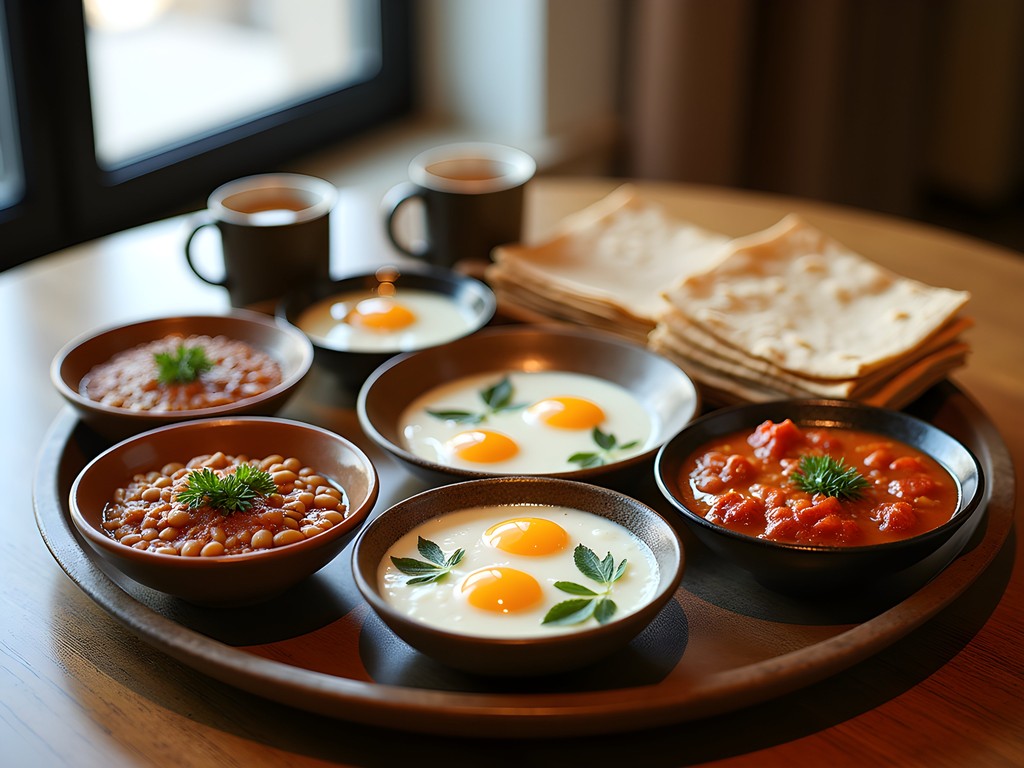
💡 Pro Tips
- For families with children, request 'less spicy' versions of traditional dishes—most restaurants are happy to accommodate.
- Breakfast typically runs later than Western schedules (8-10am), so pack portable snacks if you have early risers.
- Always use your right hand for eating and accepting food—it's considered proper etiquette.
Navigating Mecca's Hidden Food Markets
While the imposing structure of the Grand Mosque dominates Mecca's skyline, it's the narrow alleyways radiating outward that reveal the city's culinary soul. In my experience studying ancient marketplaces across the world, from Andean highlands to Ethiopian historical sites, I've found that food markets often preserve traditions that grand monuments cannot.
The Souq Al-Zaher, located about two kilometers from the Haram, offers families an authentic glimpse into daily Meccan life. Unlike tourist-oriented markets, this is where locals shop, and the difference is palpable. Vendors call out their wares in melodic Arabic, and the air is thick with the perfume of spices piled high in colorful mounds—cardamom, saffron, sumac, and za'atar.
I spent an afternoon with Umm Khalid, a grandmother who's sold her house-made spice blends for over four decades. She insisted I try her signature baharat—a complex mixture of seven spices that forms the backbone of many Saudi dishes. "Every family has their own recipe," she told me through my interpreter app (I recommend the language translator device for families traveling in Saudi Arabia—it handled Arabic beautifully and facilitated countless meaningful interactions).
For families visiting the market, the date vendors offer a particularly engaging experience. Children are often invited to sample different varieties—from the caramel-like sukkari to the more complex ajwa dates, believed to have been grown from seeds planted during the Prophet Muhammad's time. The vendors explain each variety's origin and unique properties with passionate detail that transcends language barriers.


💡 Pro Tips
- Visit markets between 4-6pm when they're bustling but not overwhelmingly crowded.
- Bring small Saudi riyal notes for purchases—vendors rarely have change for large bills.
- Ask before photographing vendors or their goods—most are welcoming if you show respect.
Family Feasts: The Art of Kabsa and Communal Dining
"Food is meant to be shared," my host Faisal insisted as his family welcomed me into their Meccan home. This sentiment echoes across Saudi Arabia, where the communal meal represents the pinnacle of hospitality. For families traveling together, experiencing a traditional Saudi meal offers both cultural immersion and a powerful lesson in community values.
The centerpiece of our feast was kabsa—Saudi Arabia's unofficial national dish. A fragrant mountain of spiced rice topped with tender lamb, it arrived on an enormous platter placed in the center of our floor seating arrangement. Eating kabsa properly is an art form: you gather rice, meat, and vegetables into a ball using only your right hand, then pop it into your mouth in one fluid motion.
Watching Faisal's children demonstrate with practiced ease, I felt transported back to archaeological sites I've studied where communal eating vessels revealed similar dining customs across millennia. These continuities in human experience—the ways we gather and share sustenance—often tell us more about cultural identity than monuments ever could.
For families with younger children, many restaurants and homes now offer utensils upon request, though I'd encourage embracing the traditional approach when possible. I found the antibacterial hand wipes I'd packed to be essential before and after these meals—they're perfect for quick clean-ups without disrupting the flow of the dining experience.
Beyond kabsa, our meal included jareesh (crushed wheat with meat), harees (wheat porridge), and matazeez (vegetables and meat in dough). Each dish represented a different region or season, demonstrating how Saudi cuisine adapts to environmental constraints—something I've observed in ancient food preparation sites across multiple continents.

💡 Pro Tips
- When invited to a Saudi home, bring a small gift—quality dates or sweets are always appropriate.
- It's customary to eat only what's directly in front of you on a shared platter.
- Express appreciation by saying 'Bismillah' before eating and 'Alhamdulillah' after the meal.
Coastal Contrasts: Jeddah's Seafood Renaissance
The 80-kilometer journey from Mecca to Jeddah traces an ancient pilgrimage route that's been traversed for centuries. Today, it takes just over an hour by car, and the culinary landscape transforms as dramatically as the topography—from Mecca's hearty inland fare to Jeddah's fresh seafood bounty.
As a coastal city on the Red Sea, Jeddah's cuisine bears the unmistakable influence of its maritime position and history as a trading port. Here, Saudi traditions blend with influences from across the Islamic world, creating dishes that reflect centuries of cultural exchange.
Al-Balad, Jeddah's UNESCO-listed historical district, offers families a fascinating culinary walking tour. The narrow streets, lined with coral-stone buildings featuring intricately carved wooden facades, house some of the city's most authentic eateries. I found myself particularly drawn to the seafood restaurants near Bab Makkah (Mecca Gate), where the day's catch is displayed on ice for customers to select.
At one such establishment, I watched in fascination as the cook prepared sayadieh—a complex fish and rice dish seasoned with cumin, coriander, and caramelized onions. The technique reminded me of archaeological evidence I've studied showing how coastal fishing communities across different civilizations developed remarkably similar preservation and cooking methods.
For families with varying taste preferences, Jeddah offers more international options than Mecca, though I'd encourage even hesitant eaters to try local specialties like samak harra (spicy fish with red pepper and cilantro). Most restaurants are accustomed to accommodating children and will gladly adjust spice levels.
I found my compact food thermometer particularly useful when dining with families concerned about properly cooked seafood. This small tool provided peace of mind, especially when trying unfamiliar dishes or eating at more rustic establishments.
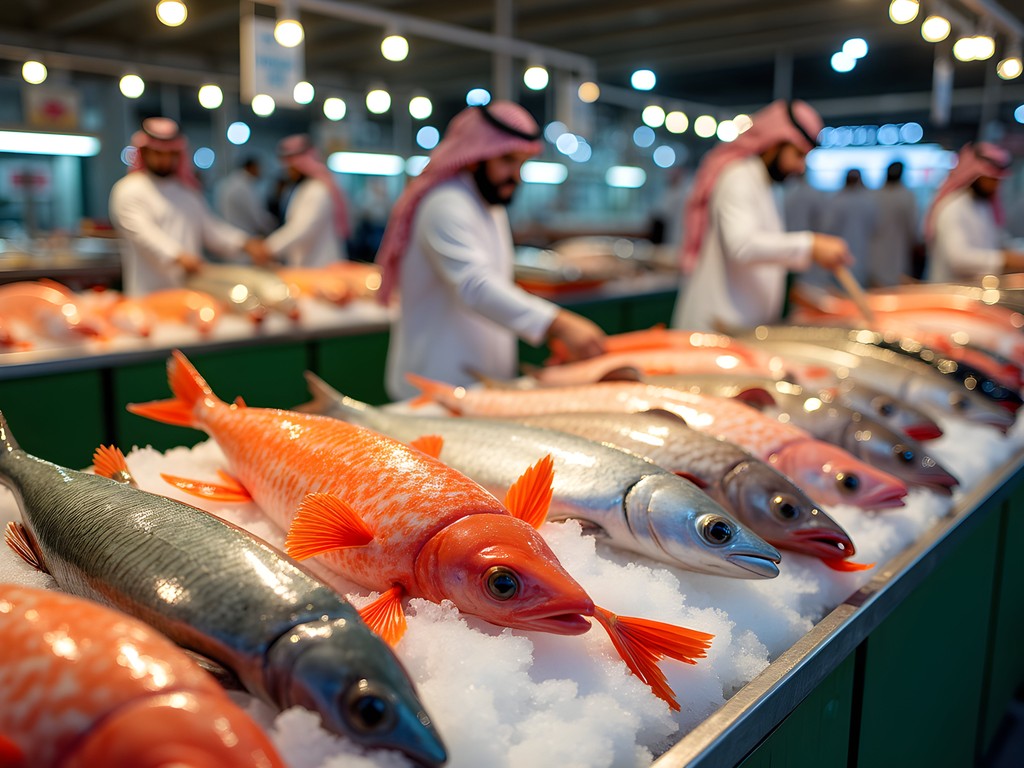
💡 Pro Tips
- In Jeddah's Al-Balad district, restaurants often close during afternoon prayer times—plan accordingly.
- When selecting fish, look for clear eyes and red gills as signs of freshness.
- Many seafood restaurants offer family-style portions meant for sharing—perfect for trying multiple dishes.
Sweet Endings: Dessert Traditions Across Generations
If there's one aspect of Saudi cuisine that instantly bridges cultural divides, it's the elaborate world of sweets and desserts. In both Mecca and Jeddah, I discovered that dessert isn't merely the final course—it's an art form that reflects regional identity and family heritage.
In Mecca, particularly during Ramadan, streets near the Grand Mosque fill with vendors selling kunafa—a cheese pastry soaked in sweet syrup. The contrast between the crispy shredded phyllo top and the soft cheese filling creates a textural experience that's utterly unlike Western desserts. Families gather around these stalls after evening prayers, the children's faces illuminated by both street lights and evident delight.
Jeddah offers its own sweet specialties, particularly basbousa—a semolina cake soaked in rose water syrup that reflects the city's historical connections to Egypt and the Levant. What fascinated me most was how these desserts preserve cultural memory. When I asked one bakery owner about his basbousa recipe, he explained it had remained unchanged for four generations, despite the dramatic modernization occurring just outside his shop windows.
For families with a sweet tooth, I recommend visiting Bab Makkah Sweets in Jeddah, where you can watch artisans prepare traditional confections behind glass partitions. The theatrical element of stretching dough for kunafa or drizzling honey over freshly-baked baklava captivates children and adults alike.
I found myself returning to these sweet shops repeatedly, not just for the flavors but for the social atmosphere they foster. Unlike the rushed coffee chains of Western cities, Saudi dessert cafes encourage lingering conversation and multi-generational gathering—a living example of how food traditions serve as cultural anchors amid rapid change.
To capture these sweet moments, I relied on my pocket-sized tripod for low-light photography in cafes and night markets. It allowed me to document these culinary traditions without disrupting the authentic atmosphere.
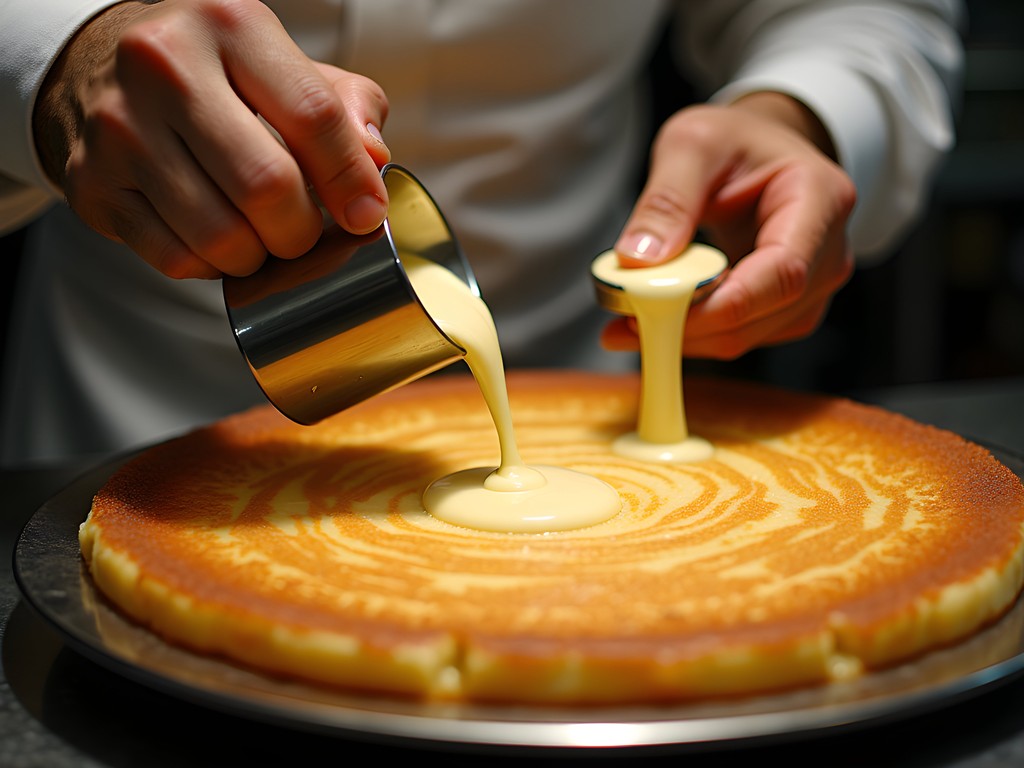
💡 Pro Tips
- Saudi desserts are intensely sweet—order one to share among family members until you gauge your preference.
- Many traditional sweets contain nuts—always check ingredients if allergies are a concern.
- The best time to try fresh-made desserts is after Maghrib (sunset) prayer when shops prepare new batches.
Final Thoughts
As my week exploring the culinary landscapes of Mecca and Jeddah drew to a close, I found myself reflecting on how food reveals the complex layering of Saudi culture in ways that mirror the archaeological sites I typically document. Each dish tells a story of adaptation, preservation, and innovation—from Bedouin survival foods transformed into celebratory feasts to coastal recipes that chronicle centuries of maritime trade.
For families considering Saudi Arabia as a destination, I urge you to venture beyond the expected pilgrimage sites and architectural marvels. Through shared meals, market explorations, and sweet indulgences, children gain a tangible connection to history that no textbook can provide. They'll witness hospitality as a core value, experience the rhythm of daily life structured around prayer times, and understand how geography shapes cultural identity.
As an archaeologist who has studied how ancient civilizations sustained themselves, I've come to believe that nothing illuminates cultural continuity more clearly than food traditions. In Saudi Arabia's kitchens and dining rooms, the past isn't relegated to museums—it's alive, aromatic, and generously shared with visitors willing to break bread and open their minds to new flavors. The true pilgrimage, I discovered, happens not just at sacred sites, but around tables where strangers become friends over the universal language of a shared meal.
✨ Key Takeaways
- Saudi cuisine varies dramatically between inland Mecca (meat-focused) and coastal Jeddah (seafood-centric)—try both to understand regional diversity.
- Family-style dining dominates Saudi food culture—embrace the communal experience for authentic cultural immersion.
- Markets offer better culinary exploration opportunities than high-end restaurants for families seeking authentic flavors.
📋 Practical Information
Best Time to Visit
October-March (avoid summer heat and Hajj season unless performing pilgrimage)
Budget Estimate
$100-150 per day per person including accommodations and meals
Recommended Duration
7-10 days to experience both cities properly
Difficulty Level
Easy (With Proper Cultural Preparation)


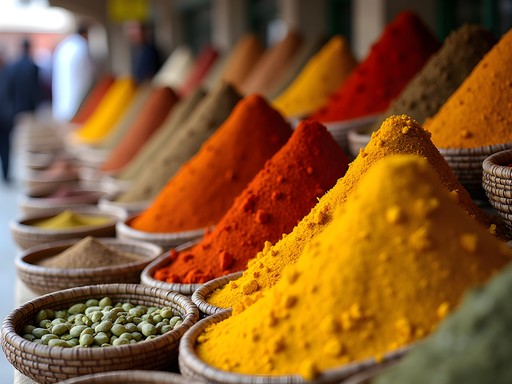
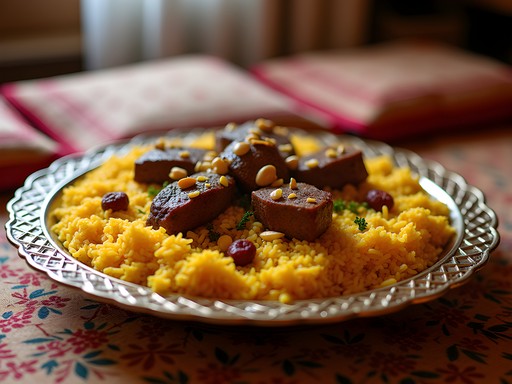

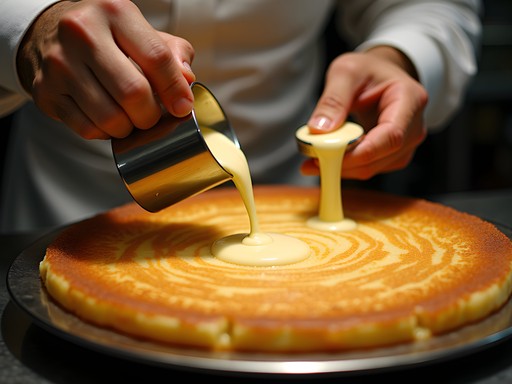






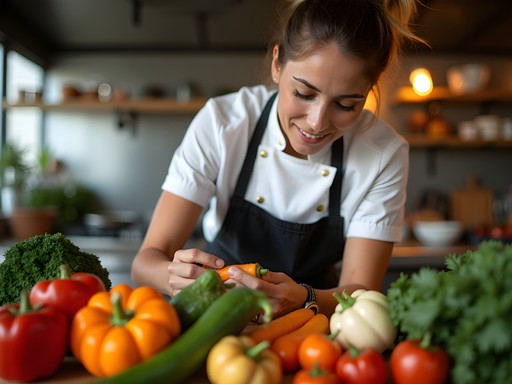

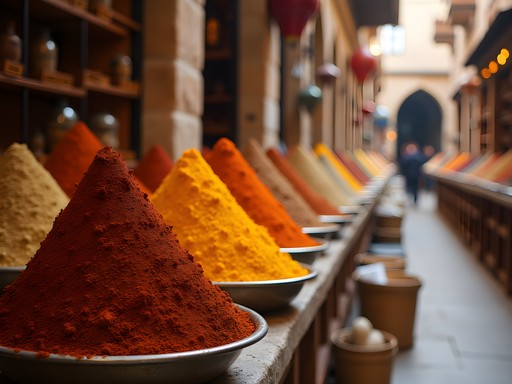
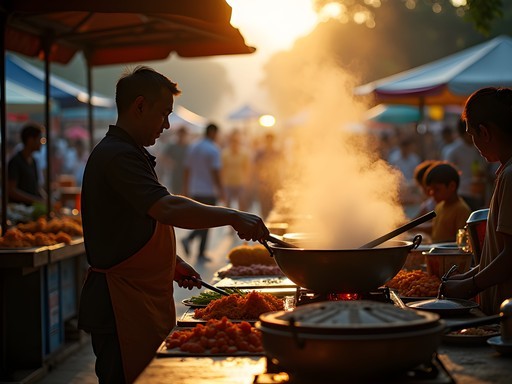
Comments
luckychamp
Those dates look incredible! 🤤
Jean Wells
Jamie, your analysis of how Saudi cuisine reflects the historical trade routes is spot on. During my visit last year, I was fascinated by the subtle differences in spice blends between Mecca and Jeddah. The coastal influence on Jeddah's cuisine creates a distinct flavor profile that many travelers miss when they rush through. I found that dining early (around 6pm) at local establishments provided the most authentic experience. One practical tip for solo female travelers: I found carrying a pocket Arabic phrasebook extremely helpful when navigating smaller, family-run eateries where English wasn't common. The section on dietary requirements was particularly useful.
wanderlustexplorer
Thanks for the tip about dining early! Did you find restaurants were accommodating to solo diners?
Jean Wells
Absolutely! While family-style dining is common, I never felt uncomfortable eating alone. Many places have counter seating, and in more traditional spots, they often seated me in areas with other women or families.
escapevibes333
OMG those breakfast photos!!! 😍 The cardamom coffee looks AMAZING! Can't wait to try it when I visit next month!
islandzone
I was in Jeddah last year and can confirm the seafood is incredible! That sayadieh (fish with rice) you mentioned was one of my favorite meals. Did you get a chance to try the grilled hareed fish? The locals took me to this beachside place where you could pick your fish fresh from the display. Unforgettable experience!
redpro
This post brings back so many memories! The contrast between Mecca's traditional foods and Jeddah's coastal cuisine is exactly what made my trip special. Has anyone tried the street food near Al-Balad in Jeddah? Those grilled corn cobs with lime and spices were my daily snack!
Claire Hawkins
Your post brought back so many memories! We visited Mecca last year with our kids, and the food was such a highlight. The communal dining experience was incredible - my children still talk about sitting cross-legged around those massive platters of kabsa! We also discovered this tiny place near our hotel that made the most amazing mutabbaq (stuffed pancakes). The owner was so kind and even showed my daughter how to fold them. Food really is the universal language, especially when traveling with family. Did you try any desserts? The kunafa we had was absolutely divine!
escapevibes333
Omg Claire, mutabbaq sounds amazing! Adding that to my list for when I visit next month!
islandclimber
Did you find any good vegetarian options in the markets?
wanderlustexplorer
This is making me hungry! Did you find any restaurants in Mecca that were particularly welcoming to non-Arabic speakers? Planning my first trip there soon.
Jamie Owens
Most places I visited were quite welcoming! Al Baik is super accessible and a must-try. For something more upscale, try Al-Zaeem Restaurant near the Haram - they have picture menus and some English-speaking staff.
wanderlustexplorer
Thanks so much! Adding those to my list. Can't wait to try the kabsa you mentioned!
oceanperson
Just booked my trip to Saudi Arabia for next month! This post couldn't have come at a better time. Any specific dish you would say is an absolute must-try in Jeddah that might not be in the guidebooks?
Jamie Owens
In Jeddah, look for Sayadieh - it's a fish and rice dish with caramelized onions and amazing spices that many tourists miss! Al Nakheel restaurant on the Corniche does an incredible version.
hikingchamp6765
I visited Mecca last year and completely missed those hidden food markets you mentioned! Definitely adding them to my list for next time. The Kabsa I had was life-changing though - so many layers of flavor I'd never experienced before.
redpro
Same! I missed those markets too. Did you try the Saudi coffee? That cardamom flavor is something I still dream about.
hikingchamp6765
Oh yes! The coffee ceremony was beautiful - I actually brought home some cardamom pods to try recreating it, but it's never quite the same as having it there.
Venture X
Premium card with 2X miles, $300 travel credit, Priority Pass